The year 2013 marks the 50th anniversary of Lamborghini Automobili. To celebrate this milestone in the history of the Italian supercar manufacturer GTspirit spend a day with some of the highlights produced in the last 50 years.
The official Lamborghini 50th anniversary celebrations take place around the globe during the entire year, the climax of the festivities will take place this week with the 50th anniversary Grand Tour. A convoy of 350 Lamborghinis will leave from Milan on 8 May and travel 1200 kilometers through Italy to the finish at the Lamborghini Headquarters in Sant’Agata Bolognese.
We are not attending the official celebrations, but despite that we didn’t want to let this milestone go past without a small celebration. So after a bit of brainstorming with our team and our friends over at Elite Garage we decided to host our own Lamborghini 50th Anniversary event. The result was a wonderful day in Switzerland, the smell of petrol, the sound of raging bulls and over 1000 photos. We have selected the best photos and you can see them in the gallery below. We put special emphasis on the V12 models as they formed the foundation for the Lamborghini cars we know today. And hopefully the V12 will continue to play an important role in the next 50 years history of Lamborghini!
Lamborghini Miura SV
The Miura wasn’t the first Lamborghini to leave the factory, yet it enjoys a reputation as the most desirable of all the Lamborghini’s. You could even go as far as describing the Miura as the car that defined the Lamborghini brand, more so, the car that defined the supercar. Just from looking at the Miura, you understand that unique blend of extreme styling with extreme performance. The Lamborghini Miura SV is the ultimate iteration of this.
Despite the defining status of the Miura, it wasn’t actually a car that company founder Ferruccio Lamborghini either commissioned or approved. Ferruccio’s preference was towards high-powered GT cars. The Miura was actually developed after hours by Lamborghini engineers. Yet the Gandini design attracted so much attention when it first went on display that Ferruccio had no other option but to give it the green light for production.
Named after the Miura Cattle Ranch located in Seville, Spain, the Miura name evokes connotations of ferociousness and cunning. The original design came about in two stages. Initially, the rolling chassis went on display at the Turin Auto Show 1965. Deposits were taken and work then got underway to design a body to wrap it with. By the time the Miura made its full production debut at the Geneva Motor Show 1966, engineers were still scratching their heads trying to fit the huge V12 into the rear compartment. So much so that the car they displayed didn’t actually have an engine fitted!
The Miura was the first Lamborghini to depart from the GT layout in favour of a transversely-mounted mid-engine layout. The 3.9 litre V12 engine powered the rear wheels with 350hp. By 1968, the Miura was selling well so Lamborghini saw fit to make a few updates. The Miura S was born. Three years later in 1971 Lamborghini launched another updated Miura; the Miura SV.
The Lamborghini Miura SV gets the same 3.9 litre V12 as earlier cars, uprated to a full-fat 385hp. 150 were built in total, compared to 474 standard Miura’s and 140 Miura S models. Options were simply limited to dry-sump lubrication and a self-blocking differential. The rear arches also grew by 13mm to accommodate new Pirelli tyres and a revised suspension geometry. Changes were made at the front and the interior gained a genuine leather upholstery.
In its time, the Lamborghini Miura SV was the fastest car in the word. Strictly speaking, the Miura SV wasn’t openly available to customers. If you wanted a Lamborghini Miura SV, you had to made that specific request to the factory. Several were taken to even further extremes, creating Lamborghini Miura SVJ editions. An epic car to start an epic tradition.
The Lamborghini Miura was in production from 1966 until 1972 and in total 764 Miuras have been build. The Miura is powered by a 3.9 litre V12 engine and in the original Miura this engine delivered 350hp with a weight of just 1,125 kg. The 1971 Lamborghini Miura SV we had on our anniversary shoot was more powerful with 385hp but also 173 kg heavier mainly due to the wider wheels. The top speed of the Miura SV is about 270 km/h and the sprint from zero to 100 km/h takes roughly 5,5 seconds. Believe it or not the Miura SV cost new around $ 20,000 in 1971 and due to popular demand and iconic status good low mileage examples are now easily worth in excess of 1,200,000 USD.
Lamborghini Countach 5000 QV
The Lamborghini Countach was designed, once again, by Marcello Gandini, following the success of his earlier Lamborghini Miura design. From one supercar to the next, Gandini created yet another classic. The Countach is wide and low, yet surprisingly short in comparison to modern day Lamborghini’s. The shape pioneers what designers call the ‘cabin-forward’ design, allowing Lamborghini a larger space to fit the engine.
For the first time, Lamborghini fitted a set of scissor doors to their flagship model. The car’s tubular spaceframe chassis meant that it naturally featured high door sills. What started out as a practical solution to allow customers easier entry and exit from the vehicle, quickly became a defining feature for the extreme V12 Lamborghini models.
The first customer Lamborghini Countach left the factory in 1974. At the time, it probably felt like the car of the future. It broke tradition in every sense of the word. Lamborghini even broke their naming policy for the supercar. The word Countach has its roots as a piemontese exclamation that men used when they saw a beautiful woman. Fitted with a 4.0 litre V12 engine and 375hp, the Lamborghini Countach had the performance to match the looks.
The car we shot was the Lamborghini Countach 5000 QV. Essentially, the 5000 QV came about as a direct result of the Ferrari TestaRossa. Lamborghini needed an answer for Ferrari’s latest and greatest. Taking the 10 year old Countach design, Lamborghini added extra power and some visual enhancements before presenting the new car at the Geneva Motor Show 1985.
With its 5.0 litre V12 engine and 455hp power rating, the Lamborghini Countach 5000 QV became an instant hit. Downdraft Weber carburetors were used for the first time on this car, which meant a power bulge had to be fitted to the rear hood. As a result, the Countach 5000 QV suffered from rear visibility issues, although owners will probably tell you that in the grand scheme of things, this was a pretty minor issue.
The Countach 5000 QV received a facelift in 1987. This example was built in 1988 and features a different set of side sills to the original model and a new rear spoiler.
The Lamborghini Countach was produced from 1974 until 1990 and in total 2,042 Countachs have left the factory. The original Countach LP 400 had an output of 375hp with a weight of just 1,065 kg. With all the modifications of later models, the 1988 Countach 5000 QV weight 1,490 kg. But despite the extra weigth the 455hp strong 5000 QV reached new heights with a 0-100 km/h sprint in 4,9 seconds. Top speed however was sacrificed and with 295 km/h lower than the 309 km/h of the first gen Countach LP 400. The Countach 5000 QV sold new for around $ 100,000 in the mid 80’s and good examples are worth between 150,000 and 250,000 USD now.
Lamborghini LM 002
The Lamborghini LM002 was Lamborghini’s first foray into the world of off-road vehicles. The LM002 came at a time when SUV’s were actually designed and built with off road driving in mind. The LM002 was originally built as a prototype by Lamborghini in 1977 with selling to the US military in mind. The military never tested it, perhaps on account of the rear engine layout. Instead, Lamborghini took the original prototype back to the drawing board to create the LM002.
As you’ve probably worked out already, the Lamborghini LM002 was a massive departure from conventional Lamborghini’s. Yet it retained some of the flair that gave Lamborghini its reputation. Lamborghini fitted their own V12 engine to the LM002 with a displacement of 5.1 litres or even an enhanced 7.2 litre marine V12 unit.
Each LM002 gets a steel tubular chassis, heavy-duty suspension and a lower compression rating tuned to run 94 RON petrol. The very first customer to take delivery was H.R.H. King Hassan of Morocco in late 1986. The LM002 drew plenty of attention with Sylvester Stallone, Tina Turner and Mike Tyson all purchasing a copy.
The Lamborghini LM 002 was produced between 1986 and 1993 and 328 were built in total, each handmade for the individual customer. What made the LM002 so special was the 2,700kg weight coupled with the 200km/h plus top speed. Nothing else came close to being as obnoxious and over the top, it was the ‘Rambo Lambo’. Rumours have circulated for years that some 40 examples were exported for foreign militaries, however, this has never been confirmed and is always denied by the factory. The Lamborghini LM 002 changes hands today for between 80,000 and 160,000 USD.
Lamborghini Diablo
The Lamborghini Diablo had a difficult job. Succeeding a car as iconic as the Lamborghini Countach is no easy feat. Marcello Gandini returned once again, penning the design on behalf of legendary design house Bertone. The result, after two redesigns, is the production vehicle you see in the photos. This particular Lamborghini Diablo is a standard launch edition model which the owner has fitted with a few individual aftermarket parts.
As is the way with (almost) every Lamborghini model, the Diablo was named after a Spanish fighting bull. The Diablo fought ‘El Chicorro’ in Madrid on 11 July 1869, winning freedom after an aggressive battle. Essentially, that’s the Diablo development personified. Five years of research and development went into creating the production vehicle before it went on display at the Hotel de Paris in Monte Carlo on 21 January 1990.
From launch, the Diablo came fitted with a 5.9 litre V12 engine. As the goal was to create a car that would breach the 200mph barrier, the Diablo got 492hp, making it one of the fastest cars available at the time. Initially, power was fed to the rear wheels. In 1993 though, Lamborghini adapted the LM002 four-wheel drive platform to fit the Diablo VT.
Rear spoilers were an option for early cars, yet the standard equipment was impressive compared to the Countach. It included fully adjustable seats and steering wheel, electric windows, an Alpine stereo system and power steering. One of the biggest advantages over the Countach in terms of comfort was the complete one-piece window which wound all the way down into the scissor doors.
Post-Audi takeover in 1998, the Diablo received an update, culminating in the special edition Lamborghini Diablo GT. 83 were sold, fitted with a 6.0 litre V12 engine and a peak power output of 575hp. It’s these cars that remain the most desirable of the Diablo range. The GT was the last of the rear-wheel drive V12 Lamborghini’s with the benefit of modern Lamborghini refinement.
The Lamborghini Diablo was produced from 1990 and 2001 and in total 2,884 Diablos left the factory. Today you can pick up a first-gen Diablo for about $ 100,000. The rare Diablo SVR (only 31 produced) will set you back 150 to 200k USD. But most desired are the 1999 Diablo GT and 2000 Diablo GTR that are both race versions of the latest generation Diablo. Expect to pay between 350,000 and 400,000 USD for a good Diablo GT and a rare Diablo GTR went up for sale two years ago with an asking price of nearly 700,000 USD.
Lamborghini Murcielago LP670-4 SV
The Lamborghini Murcielago LP670-4 SV is the ultimate iteration of the Lamborghini Murcielago platform. The Murcielago received its official unveil at the Frankfurt Motor Show 2001, followed by a refresh at the Geneva Motor Show 2006 in the form of the Lamborghini Murcielago LP640. The Lamborghini Murcielago LP670-4 SV finally took centre stage at the Geneva Motor Show 2009.
The name Murcielago derives, in traditional Lamborghini fashion, from a legendary Spanish fighting bull of the same name. Legend tells the story of matador Rafael Molina ‘Largertijo’ subjecting the bull to 24 spears. Remarkably, the bull remained defiant, causing the matador to spare Murcielago’s life. Much in the same way that the Lamborghini Murcielago fathered a line of potent supercars, Murcielago’s blood line can be traced into a handful of Spain’s strongest fighting bulls.
The Lamborghini Murcielago LP670-4 SV features the final iteration of Lamborghini’s own V12 powerplant. In the SV, output is inflated to 6.5 litres with power pegged at 670 naturally aspirated horsepower. The SV sheds around 100kg of weight over the LP640; 33kg from the chassis and exterior, 34kg from the interior and 33kg from the engine and drive train.
Part of the weight saving is due to a redesigned exhaust muffler box. We assume that it isn’t entirely by accident that the LP670-4 SV sounds better as a result. The choice of a six-speed e-Gear or six-speed manual gearbox has a small affect on performance, yet both options reach a top speed of 337km/h with 100km/h sprint disposed of in 3.2 seconds.
Design wise, the Lamborghini model range modernises the classic Lamborghini look rather than revolutionising. With scissor doors and a low, wide look, the Murcielago is unmistakeably from Sant’Agata Bolognese. The SV was offered with an optional aeropack wind, as demonstrated by the car you see in the gallery. This provided an extreme new look for an extreme new car. Fully carbon fibre, with carbon fibre supporting brackets, the spoiler produces extra downforce at high speed.
Inside, the Murcielago LP670-4 SV interior is more sensible. As with all supercars of its time, the SV makes extensive use of Alcantara. The steering wheel and display dials are almost non-descript, yet you definitely feel as though you’ve stepped into somewhere special.
The Lamborghini Murcielago was produced from 2001 until 2010 and in total 4,099 Murcielagos have been produced. Unlike the original plan to produce 350 Murcielago LP670-4 SV’s, only 186 SuperVeloces were buid before the factory stopped production to make way for the Aventador. The Lamborghini Murcielago SuperVeloce now sells for between 350,000 and 400,000 USD, about the same price the SV sold for new in 2009 and 2010.
Lamborghini Gallardo LP560-4 Blancpain Super Trofeo
The Lamborghini Gallardo LP560-4 Blancpain Super Trofeo is what you would call the odd-one out in our lineup. It is the only car that doesn’t feature a V12 powerplant. Instead, it borrows a 5.0 litre V10 engine from the Audi family product catalogue. The reason we have included it is simply because the Gallardo was such an important car for the Italian auto maker. For the first time, the Gallardo allowed Lamborghini to sell cars in numbers.
We have made some adjustments though. To fit in with the extreme nature of the V12 engined cars, we thought it would be wise to procure the most extreme Gallardo model to date. The Lamborghini Gallardo LP560-4 Blancpain Super Trofeo was part of a customer racing program. Built on top of a production Gallardo model, the Super Trofeo is a no-holds barred racer.
To start the Gallardo story, we have to explain that in 1998, on the back of financial problems, Audi acquired the Lamborghini brand. The original Gallardo design was penned by Fabrizio Giugiaro, later to be refined by Lamborghini Centro Stile. The design has length, yet the short overhangs make it look very compact. Introduced at the Geneva Auto Show 2013, the Lamborghini Gallardo instantly started to poach customers from its Italian rival, Ferrari.
The V10 engine grew out of the 4.2 litre Audi V8 engine. The V10 adds two extra cylinders to the mix with four valves per cylinder and a total naturally aspirated power output of 500hp. In 2006, the Gallardo received its LP560-4 refresh. Power shot up to 560hp with the V10 now stretched to 5.2 litres. The 5.2 litre V10 is the engine that powers the first generation Super Trofeo we have before us today.
The Lamborghini Gallardo LP560-4 Super Trofeo features an e.gear six-speed robotized gearbox transferring power to the permanent all-wheel drive system. The reworked suspension components and the low resistance exhaust system help produce an extreme racer.
10 years into its product life-cycle, we have the Lamborghini Gallardo LP570-4 Superleggera and the Lamborghini LP560-4 available on the road to customers. The later received a mild visual facelift at the Paris Motor Show 2012, yet many suspect that this won’t slow the Gallardo’s advancing age. Hopefully Lamborghini will replace the Gallardo sooner rather than later!
The Lamborghini Gallardo was produced from 2003 to date and so far over 13,000 Gallardos have been sold. Despite its continued popularity, especially in Asia, the Gallardo is overdue for replacement. The Gallardo currently sells between 190,000 USD for the rear-wheel drive Gallardo 550-2 and 260,000 USD for the top of the line LP570-4 Super Trofeo Stradale.
Lamborghini Aventador
The Lamborghini Aventador is Lamborghini’s latest and greatest. Unveiled at the Geneva Motor Show 2011, it set precedents for the supercar market. For the Aventador, Lamborghini re-engineered the iconic V12 engine, optimising it for a new generation. Bored out to 6.5 litres, the L359 V12 produces 700hp and 690Nm of torque.
It is the second V12 engine developed in house by the legendary Italian marque; the fourth overall. All other V12 engines fitted to previous Lamborghini models derive from the original 350GT. It weighs 18.1kgs less than the equivalent Murcièlago engine and sits 2.8 inches lower in the chassis. Perhaps the weakest point is the continued use of a single plate clutch in preference to a dual plate system. However, Lamborghini are quick to point out the weight saving advantages, not to mention the raw feel of the gear shift.
From a design perspective, the Lamborghini Aventador blends features of all the greatest Lamborghini V12 models. The design is obviously an evolution of the Lamborghini Reventon design language with angular air intakes and plenty of drama. The doors feature that unique Lamborghini style, rising vertically out of the body. The wing mirrors are mounted low down too, much like the Lamborghini Diablo.
Under the skin, the Aventador is every bit as modern as its looks and performance suggest. It uses a one piece carbon fibre monocoque to protect occupants. Coupled to the front and rear aluminium suspension frames, the Aventador is extremely stiff, yet sublimely controlled by a sophisticated pushrod spring and damper system.
Inside, the Lamborghini Aventador feels more modern than any other V12 engine Lamborghini. There is plenty of leather, a sat nav, a solid speaker system and a comfortable driving system. The starter button is central to the theme of the Lamborghini Aventador. It is accessed by lifting a safety cover. Depress it, with your foot on the brake, and the V12 ignites whilst the fighter jet themed dashboard display flickers into life.
The Lamborghini Aventador is produced from 2011 to present and so far over 1,700 Aventadors have been produced. The Aventador currently sells new for between 400,000 and 450,000 USD.
Special thanks to Elite Garage Zuzwil, Jesper van der Noord Photography and Thom van der Noord Photography!


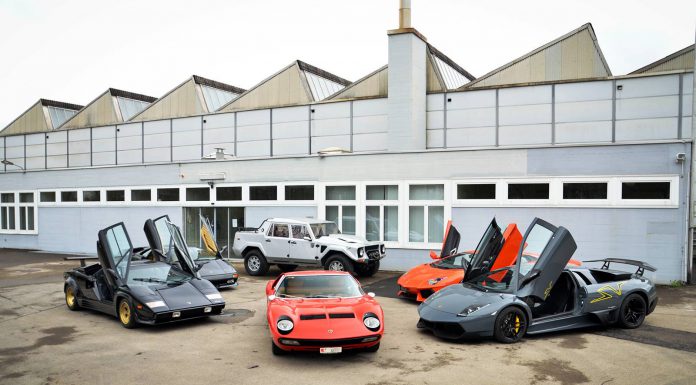
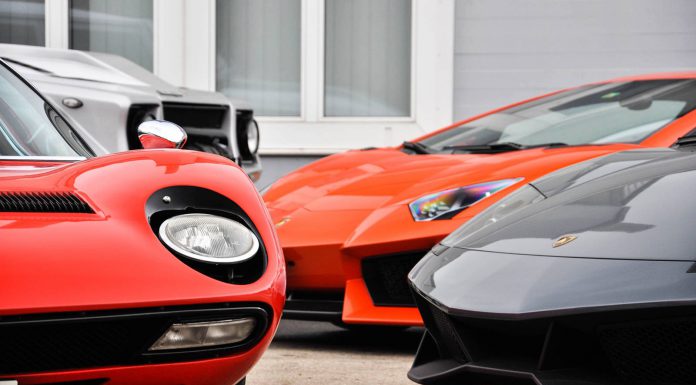




















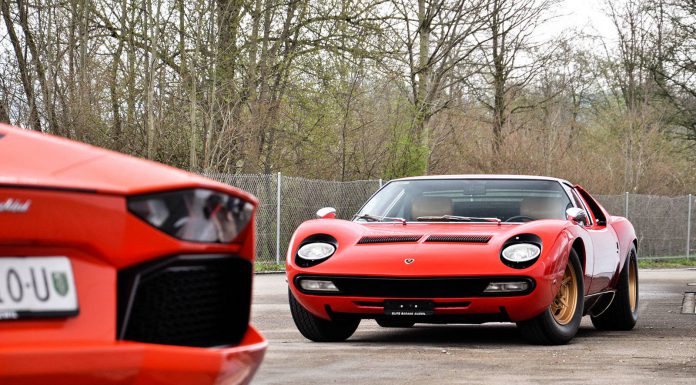















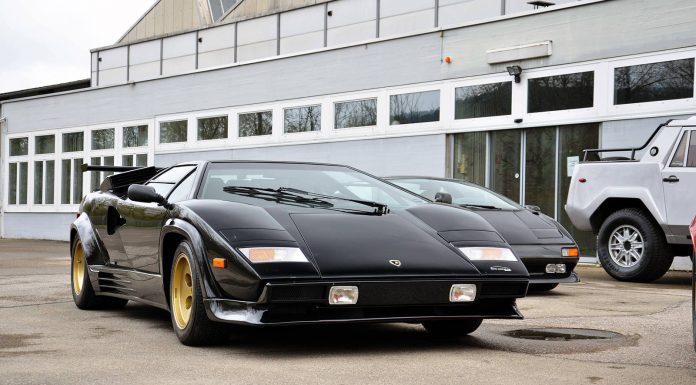










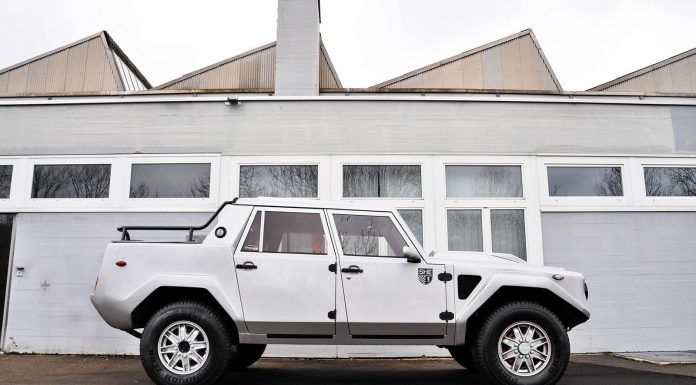





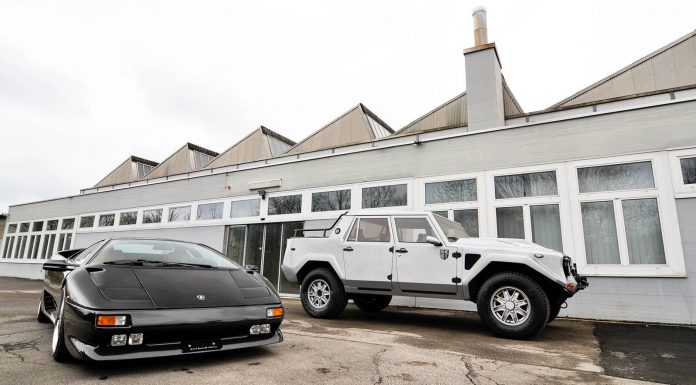





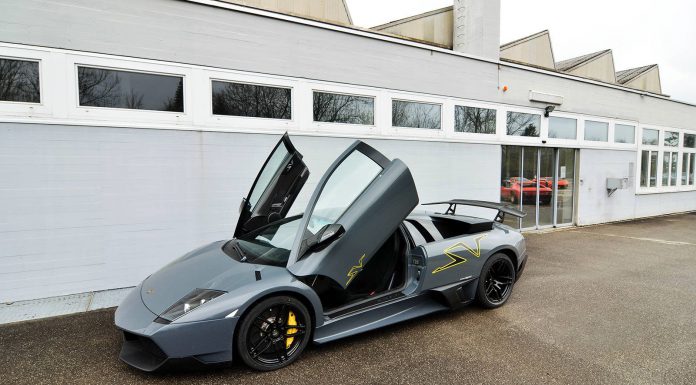










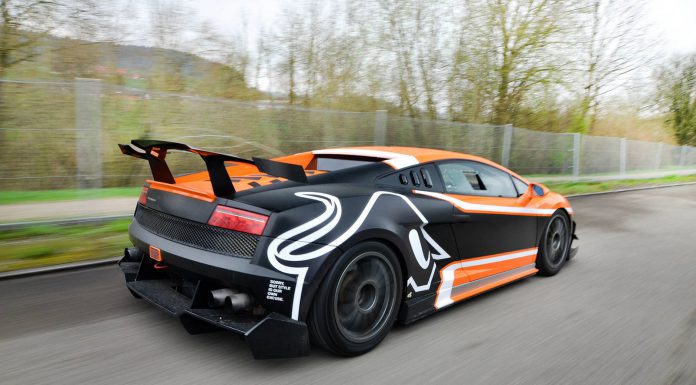





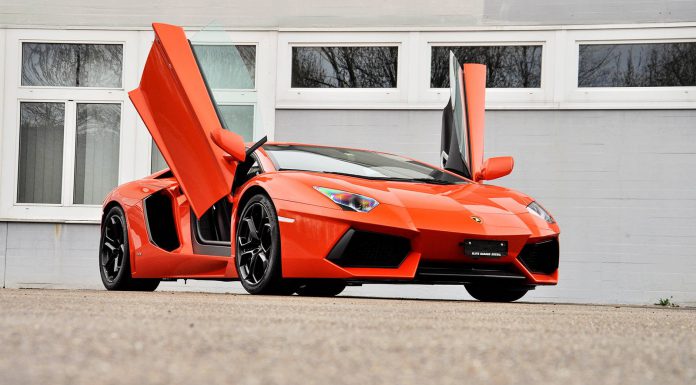





















Very Nice Cars, and LM002 as well,.
Wouw, wonderfull cars. I like them.